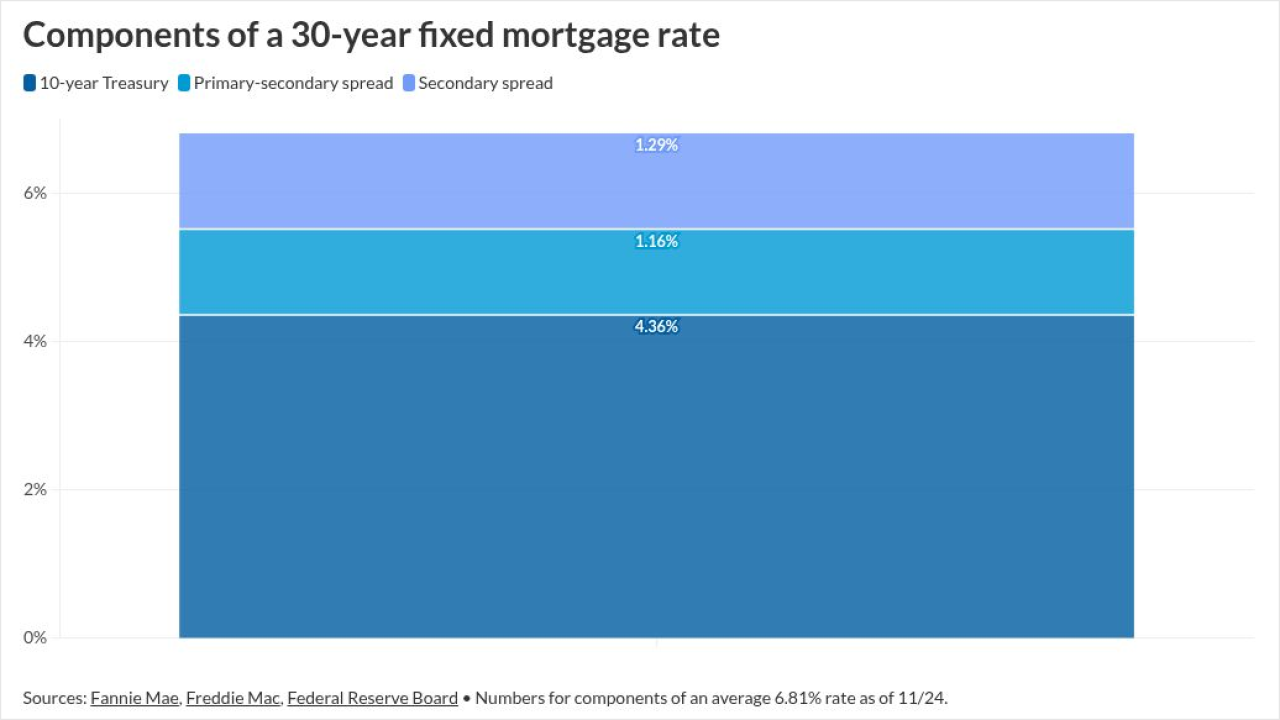Truist Financial is forecasting a larger-than-expected rise in expenses amid ongoing technology investments, a planned minimum wage hike and rising operating losses.
The Charlotte, North Carolina, company now says that its full-year costs will increase 2-3% from last year, up from the previous range — the “high end of 1-2%” — that executives laid out in April. The latest estimate excludes any remaining expenses related to the merger of BB&T and SunTrust Banks, which came together to create Truist in late 2019.
One key rationale for the BB&T-SunTrust merger was the promise of reduced expenses. Truist has been touting its cost-reduction plans

On Tuesday, Truist executives tried to convince analysts that its costs are in check, partly by reaffirming the bank’s commitment to achieving positive operating leverage this year.
“No eye off the ball, I can assure you of that,” Chairman and CEO Bill Rogers said about expenses during the bank’s quarterly earnings call. “The competency that we built through the merger to manage expenses, understand expenses, create continued improvements — all still there and will be a big part of our expense story for this year and for the years going forward.”
The $545.1 billion-asset bank, which has been saying that it expects to eliminate $1.6 billion in annual expenses by year-end, has taken several steps to trim costs, including by closing branches and consolidating back-office functions. More cost-cutting actions lie ahead, including the decommissioning of old data centers.
Still, Truist has to spend money in certain areas right now, Rogers said. Those priorities include various technology upgrades and a
Trusit is also incurring certain operating losses “related to the client experience,” Rogers said. The bank did not disclose the exact size of those losses, which are reported under “other expenses,” during the second quarter.
Though Rogers is “confident” that the operating losses will “normalize over time given the investments” the bank is making, such losses are “up higher than we think they should be,” he told analysts.
When pressed by Deutsche Bank analyst Matt O’Connor about whether the operating losses are related to Truist’s February technology integration, Rogers did not give a direct answer. The integration, which involved shifting nearly seven million legacy SunTrust customers onto the new Truist digital platform,

“There are decisions we made relative to client experience,” Rogers said in explaining the operating losses. One example, “on the fraud side, is giving the client the benefit of the doubt upfront. … That is a one-time increase, but over time that normalizes.”
Truist reported second-quarter net income of $1.5 billion, down 6.7% from the year-ago period, primarily due to additional provisions for credit losses. The bank’s provision in the second quarter was $171 million, compared with a release of $434 million a year earlier.
Earnings per share totaled $1.09, topping the average estimate of analysts polled by FactSet Research Systems by 2 cents. Net interest income totaled $3.4 billion, up nearly 5% year over year as a result of higher interest rates, lower deposit costs and growth in the bank’s securities portfolio.
Noninterest income fell 6.5% from the year-ago period to $2.2 billion, reflecting double-digit declines in investment banking and trading fees, as well as in residential mortgage activity and other income.
The outlook for fee income for the rest of the year is “stable relative to the first half,” Rogers said. While insurance revenue should remain strong, mortgage revenue “will probably be a little flat” in the second half of the year, while wealth management fees “will probably be a little bit down,” he said.
Fees related to overdraft income are also expected to decline. The bank on Monday




